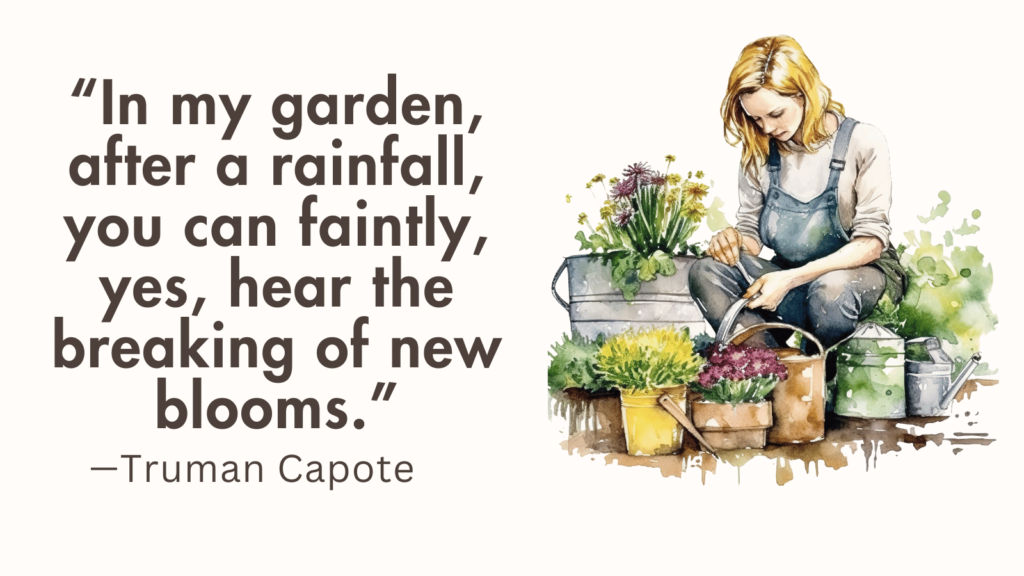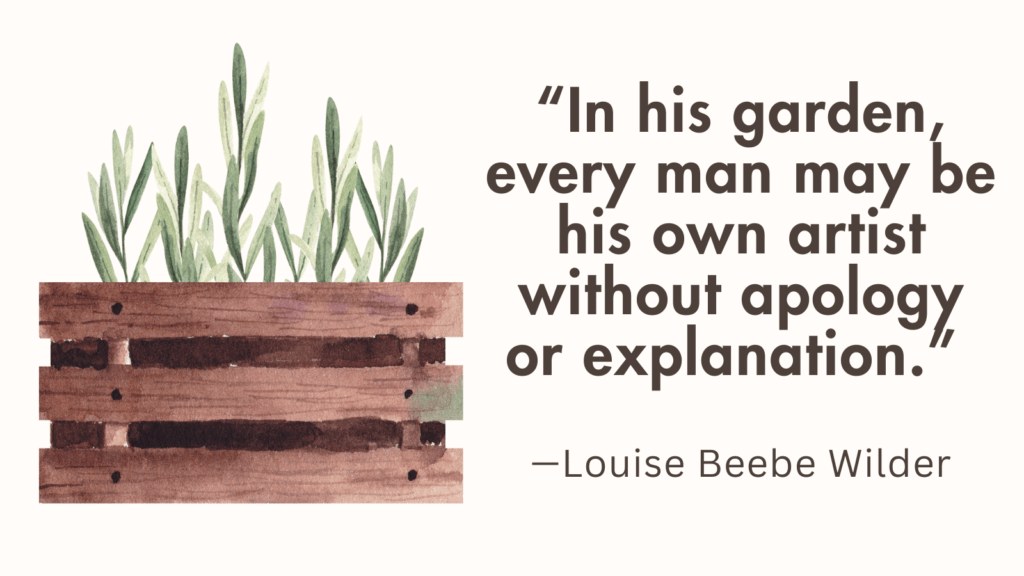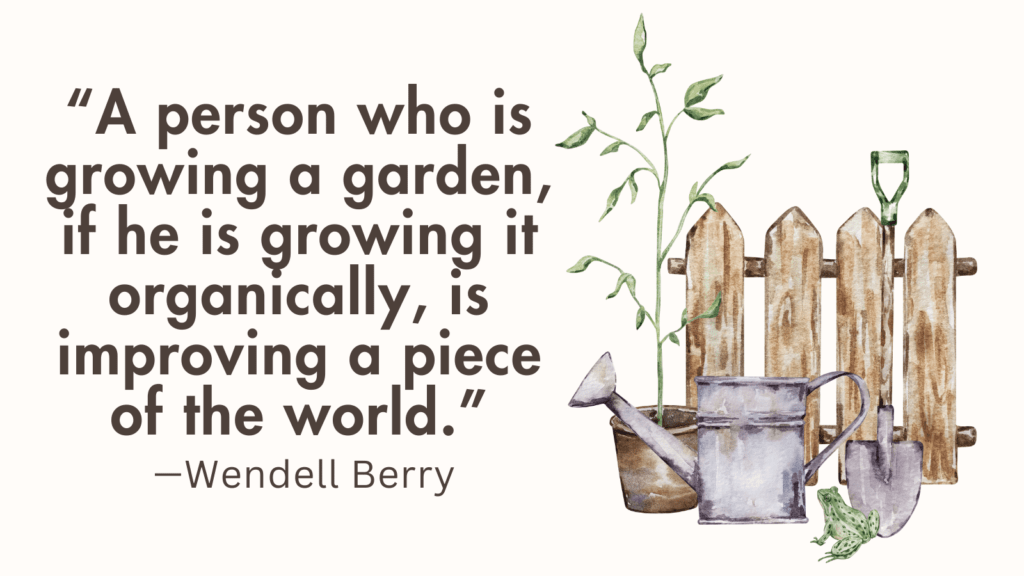This post contains a guide to garlic growing stages.
The 7 Garlic Growing Stages
Garlic, known for its distinctive flavor and numerous health benefits, can be cultivated in various climates and is a rewarding addition to any garden.
Understanding the different growth stages of garlic will help you ensure optimal growth and a bountiful harvest.
Let’s explore the key stages involved in growing garlic.
Stage 1. Germination
Garlic cloves are planted in the fall, typically 4-6 weeks before the ground freezes.
During this stage, the cloves will start to germinate and develop roots.
It is important to keep the soil evenly moist to support root development.
Adequate moisture and temperature conditions will encourage the cloves to sprout shoots above the ground.
Stage 2. Spring or Green Garlic
In early spring, you will see green shoots emerging from the soil.
This stage is often referred to as green garlic or spring garlic.
The shoots will continue to grow and develop into green foliage.
Green garlic can be harvested and used in culinary preparations, including soups, salads, and stir-fries.
Its flavor is milder compared to mature garlic bulbs.
Related: Garden Tool Box [Complete Guide + Resources]
Stage 3. Scapes
As the garlic plants continue to grow, you may notice the appearance of scapes.
Scapes are coiled, slender flowering stalks that emerge from the center of the plant.
It is essential to remove the scapes to divert energy towards bulb development.
However, don’t discard them!
Scapes are edible and can be used in various recipes to add a unique flavor and texture.
Stage 4. Young Bulb
During this stage, the garlic bulbs start to form underground.
The size of the bulbs will gradually increase as the plants continue to grow.
The foliage will remain green, and bulb development will be visible beneath the soil surface.
This stage requires consistent watering and sufficient nutrients to support bulb growth.
Related: How To Build A Garden Window?
Stage 5. Mature Bulb
The mature bulb stage is when the garlic bulbs have reached their full size and are ready to be harvested.
The foliage will begin to yellow and dry out, indicating that the bulbs are approaching maturity.
At this stage, you should reduce watering to allow the soil to dry out slightly.
This helps prevent diseases and allows the bulbs to develop their characteristic flavor and aroma.
Stage 6. Flowering Stage
If left unharvested, garlic plants will enter the flowering stage.
A tall flower stalk known as a scape emerges from the center of the plant.
The scape will produce flowers and eventually develop into bulbils (small bulb-like structures).
Allowing the flowering stage to continue will divert energy away from bulb development.
It is generally recommended to remove scapes to promote larger bulb growth.
Related: How To Start Farming With No Money?
Stage 7. Harvest
Harvesting is the final stage in the garlic growing process. It takes place once the foliage has completely dried out and turned brown.
Carefully dig up the bulbs using a garden fork or shovel, being cautious not to damage the bulbs during the process.
After lifting the bulbs, brush off excess soil and allow them to cure by hanging them in a cool, dry, and well-ventilated area for a few weeks.
Curing helps the bulbs dry out, improves their flavor, and extends their storage life.
Companion Planting with Garlic
Companion planting refers to the practice of growing different plants together for mutual benefit.
When it comes to garlic, there are several plants that can make excellent companions.
Not only do these companion plants help deter pests and diseases, but they can also enhance the flavor and growth of the garlic itself.
1. Alliums
It may be no surprise that other members of the allium family, such as onions, chives, and shallots, make great companions for garlic.
These plants have similar cultural requirements and help repel common pests like aphids and onion flies.
Planting alliums together can create a strong defense against pest infestations while maximizing space in your garden.
2. Carrots
Carrots and garlic make an excellent pairing as companion plants.
Garlic’s pungent aroma helps deter carrot flies, which are a common pest for carrots.
Additionally, carrots can help suppress weeds around the garlic plants, creating a mutually beneficial relationship.
When planting carrots with garlic, make sure to space them adequately to allow both plants to grow without competition.
Related: Why Do You Plant Rosemary By Your Garden Gate?
3. Tomatoes
Tomato plants and garlic go hand in hand in the garden.
Garlic acts as a natural repellent for pests like aphids, spider mites, and whiteflies, which can often target tomato plants.
Planting garlic near tomatoes not only helps protect them from pests but also enhances their flavor.
However, be cautious not to plant them too close together, as garlic can inhibit the growth of tomato plants if they are overcrowded.
4. Roses
Garlic has been used for centuries as a companion plant for roses.
Its strong scent repels aphids and provides protection against fungal diseases.
Planting garlic bulbs around rose bushes can improve the overall health of the roses and reduce the need for chemical pesticides.
Just ensure that the garlic is planted at a sufficient distance from the roses to avoid competition for nutrients and water.
Related: Does Clover Grow In Shade?
5. Cabbage Family
Brassicas, including cabbage, broccoli, and kale, can benefit from being planted alongside garlic.
Garlic helps repel cabbage moths, which are notorious for laying eggs on brassica plants, leading to cabbage worm infestations.
By interplanting garlic with brassicas, you can naturally deter these pests and promote a healthier crop.
Ensure adequate spacing between the plants to allow for proper growth.
6. Beets
Beets and garlic make compatible companions in the garden.
Garlic’s aroma repels leaf miners, which are common pests for beets.
Additionally, beets can help suppress weeds around the garlic plants.
This combination allows for a more productive and pest-resistant garden.
Just remember to space the plants properly to avoid crowding.
Related: How to Protect Your Watermelon Farm?
7. Peppers
Peppers, such as chili and bell peppers, can greatly benefit from being planted alongside garlic.
Garlic’s natural fungicidal and insecticidal properties help prevent common pests and diseases that affect pepper plants.
The strong odor of garlic helps deter insects like aphids and thrips.
Planting garlic around pepper plants promotes a healthier garden and can lead to larger, more flavorful peppers.
8. Strawberries
Garlic and strawberries may seem like an unusual combination, but they work surprisingly well together.
Garlic helps deter pests like slugs, which can cause damage to strawberry plants.
Planting garlic near strawberries can also improve the flavor of the berries.
Be sure to leave enough space between the plants to provide adequate airflow and prevent competition for resources.
Related: How to Grow Winter Peas?
9. Spinach
Spinach and garlic are a complementary pair in the garden.
Garlic’s natural repellent properties help keep pests, such as aphids and spider mites, away from spinach plants.
Additionally, spinach can provide shade and moisture retention for garlic during the hot summer months.
Interplanting garlic and spinach can result in healthier and more robust crops.
10. Legumes
Legumes, such as beans and peas, can benefit from being grown alongside garlic.
Garlic acts as a natural deterrent for pests like aphids and bean beetles.
The strong aroma of garlic helps protect legume plants and improves their overall growth.
Just make sure to provide enough space for both plants to develop properly.
Related: Does Garlic Need To Be Organic?
Conclusion
Growing garlic involves several stages, each crucial for successful cultivation.
Remember to select high-quality seed cloves, provide adequate water and nutrients during vegetative growth, and allow the bulbs to mature and cure properly before enjoying the fruits of your labor.
With proper care and attention, you can enjoy a bountiful harvest of delicious and nutritious garlic.
FAQ
Can garlic be grown indoors?
Yes, garlic can be grown indoors.
While garlic is typically grown outdoors in gardens or pots, it is possible to grow garlic indoors with proper care and conditions.
You will need a large pot or container with good drainage and rich, well-draining soil. Place the cloves about 2 inches deep and water regularly, ensuring that the soil remains moist but not waterlogged.
Provide sufficient light, either by placing the container near a sunny window or using artificial grow lights.
Indoor-grown garlic may take slightly longer to mature compared to outdoor-grown garlic.
Related: What’s The Difference Between A Farm And A Ranch?
How long does it take for garlic to grow?
The time it takes for garlic to grow depends on the variety and growing conditions.
On average, garlic takes around 8-9 months from planting to harvest.
It goes through different stages of growth, starting with bulb formation, followed by leaf and stem development.
As the leaves start to turn yellow and dry out, it indicates that the garlic bulbs are maturing and ready for harvesting.
Can garlic be grown in different climates?
Garlic can be grown in a wide range of climates, but it prefers cool to mild temperatures.
It grows best in temperate regions with long, cool springs and sunny summers.
However, garlic can tolerate a range of temperatures, from cold winters to hot summers.
Some varieties are more suited to specific climates, so it’s important to choose the right variety for your climate.
How many times can garlic be harvested?
Garlic can generally be harvested once a year.
After harvesting, the garlic bulbs can be stored for several months in a cool, dry, and well-ventilated area.
Proper curing of the bulbs helps prolong their shelf life and preserves their flavor.
Related: Does Contour Farming Work Everywhere?
When is the best time to plant garlic?
The best time to plant garlic is in the fall, typically around 4-6 weeks before the ground freezes.
Planting in the fall allows the garlic to establish roots and develop during the winter months.
This results in larger and healthier bulbs when they are ready for harvest in the following summer.
Planting garlic in the spring is also an option, but it may result in smaller bulbs.
How deep should I plant garlic cloves?
When planting garlic cloves, you should aim for a depth of about 2 inches (5 cm).
Place the cloves with the pointed end facing upwards and the flat side down.
Proper planting depth ensures that the cloves are protected and have enough soil coverage to develop roots and shoots.
Spacing between the cloves should be about 4-5 inches (10-12 cm) to allow for proper growth and airflow.
Related: How To Keep Chickens Out Of Garden?
Can I plant store-bought garlic?
Yes, you can plant store-bought garlic cloves.
However, it’s important to choose organic garlic or varieties specifically labeled for planting, as some store-bought garlic may have been treated with chemicals that could inhibit growth.
Does garlic require full sun or partial shade?
Garlic plants thrive in full sun.
They require at least 6-8 hours of direct sunlight per day for optimal growth and bulb development.
While garlic can tolerate some shade, it’s best to provide them with as much sun exposure as possible.
How often should I water garlic plants?
Watering needs for garlic plants depend on the growing conditions and climate.
Garlic prefers moist but well-draining soil.
Water regularly to ensure the soil remains consistently moist, especially during dry spells.
Avoid overwatering, as garlic doesn’t like sitting in waterlogged soil.
Monitor the moisture level by checking the top few inches of soil and adjust watering accordingly.
Related: How To Grow Sustainable Food?
Should I fertilize garlic plants?
Fertilizing garlic plants can be beneficial, especially if the soil lacks necessary nutrients.
Before planting, enrich the soil with organic matter such as compost or well-rotted manure.
This will provide essential nutrients and improve soil structure.
Garlic typically doesn’t require additional fertilizer during its growth cycle if the soil is already nutrient-rich.
However, if you notice signs of nutrient deficiency, you can apply a balanced organic fertilizer once or twice during the growing season, following the package instructions.
How do I prevent weeds around my garlic plants?
To prevent weeds around your garlic plants, it’s best to start by preparing the planting area properly.
Remove any existing weeds and grass before planting.
After planting, you can apply a layer of organic mulch, such as straw or wood chips, around the garlic plants.
Mulch helps suppress weed growth by blocking sunlight and conserving soil moisture.
Additionally, regular hand-weeding or using a small trowel to remove weeds close to the garlic plants can help keep them under control.
Related: How To Eat Sustainably On A Budget?
Are garlic plants prone to pests and diseases?
Garlic plants are generally considered low-maintenance and relatively pest and disease resistant.
However, they can still be susceptible to certain issues.
The most common pests include onion thrips, aphids, and nematodes.
To minimize pest problems, inspect your plants regularly and remove any infested leaves or insects you find.
You can also use insecticidal soaps or natural remedies like neem oil if necessary.
Proper crop rotation can help reduce pest and disease pressure over time.
As for diseases, garlic can be prone to fungal infections such as white rot, downy mildew, and rust.
To prevent these diseases, avoid overwatering, provide good air circulation, and plant disease-free cloves from reputable sources.
If you notice any signs of disease, such as yellowing leaves or white powdery growth, it’s important to act promptly by removing and destroying affected plants to prevent the spread of infection.
When do I know it’s time to harvest garlic?
Knowing when to harvest garlic depends on the variety and desired bulb maturity.
Generally, garlic is ready to harvest when the foliage begins to turn yellow or brown and starts to dry out.
This usually occurs in late spring or early summer, approximately 8-9 months after planting.
To confirm readiness, gently dig up one or two bulbs and check if they have developed into fully formed cloves with papery skins.
Avoid leaving garlic in the ground for too long, as over-mature bulbs may split and become less flavorful.
Once harvested, allow the bulbs to dry in a well-ventilated, shaded area for a couple of weeks before moving them to a cool, dry storage location.
How do I store harvested garlic?
To store harvested garlic, it’s important to cure the bulbs properly first.
After harvesting, brush off any excess soil, but leave the foliage intact.
Hang or lay the garlic in a well-ventilated area, away from direct sunlight, where the temperature is around 70-80°F (21-27°C) with low humidity.
Allow the garlic bulbs to cure for about 2-3 weeks until the outer skins become dry and papery.
Once cured, trim the roots and foliage, leaving about an inch (2.5 cm) of stem attached, and store the bulbs in a cool, dry, and dark place.
Ideal storage conditions are around 50-60°F (10-15°C) with a humidity level of 60-70%. Stored properly, garlic can last several months.
Related: Do Rabbits Eat Mint In The Garden?
Can I replant garlic cloves from my own harvest?
Yes, you can replant garlic cloves from your own harvest.
Select the healthiest and largest cloves as these will produce the best bulbs.
Before planting, separate the cloves from the bulb, being careful not to damage them.
Each clove should be planted individually with the pointed end facing up, about 2 inches (5 cm) deep and spaced 6-8 inches (15-20 cm) apart.
Planting in the fall is usually recommended for larger, more flavorful bulbs, but you can also experiment with planting smaller cloves in the spring.
Can I eat the garlic scapes?
Garlic scapes, the curly flower stalks that emerge from the garlic plants, are absolutely edible and delicious!
They have a milder flavor compared to garlic cloves and can be used in various culinary preparations.
Harvest the scapes when they are young and tender, before they start to straighten out.
They can be chopped and used in stir-fries, soups, pestos, or pickled.
Removing the scapes can divert energy back into bulb growth, resulting in larger garlic bulbs at harvest time.
Related: How To Put Slate In A Garden?
Can I plant garlic in the spring?
While fall planting is popular for garlic, certain regions with mild climates can successfully grow garlic by planting in the spring.
However, keep in mind that spring-planted garlic may produce smaller bulbs compared to fall-planted ones.
Choose early-maturing garlic varieties and ensure they receive proper care, including consistent moisture and fertilization during their growing period.
Be aware that in some regions, spring planting may lead to the garlic not fully maturing before hotter temperatures arrive, affecting bulb development.

Garden Cart
*As an Amazon Associate I earn from qualifying purchases, at zero cost to you, if you click through the link and finalize a purchase.





